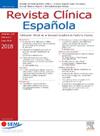Modelo de predicción de complicaciones causadas por hipertensión portal o cáncer hepático en una cohorte española de pacientes con hepatitis B crónica
IF 1.7
4区 医学
Q2 MEDICINE, GENERAL & INTERNAL
引用次数: 0
Abstract
Background aims
To identify risk factors associated with liver complications in patients with chronic hepatitis B infection in an unselected cohort of hepatitis B patients in southern Spain.
Methods
A prospective open-cohort study was conducted on 437 patients with uncomplicated chronic hepatitis B infection in two hospitals in Málaga, southern Spain. The follow-up time ranged from 0.5 to 31.5 years (mean: 13.8 ± 9.5 years; median: 11.4 years). The aim of this study was to evaluate the occurrence of the initial liver complication during follow-up, which is defined as the emergence of liver cancer or complications resulting from portal hypertension. Survival curves were obtained using a time-to-event method through Kaplan-Meier analysis. Multivariate Cox regression was conducted to estimate the hazard ratios of risk factors associated with complications after adjusting for multiple variables. The follow-up of the patients was carried out under conditions of usual clinical practice.
Based on the weighted adjustment of these factors, we developed a Hepatitis B Complication Score (HBCS) from which it was possible to identify patients with low and high risk of complications during follow-up.
Results
33 out of 437 patients (7.55%) experienced liver complications, 12 (36.3%) were secondary to portal hypertension, and 21 patients (63.7%) developed liver cancer. A Multivariate Cox regression identified the following independent risk factor: Age above 45 years: HR 7,10 (2.9-17.3); low platelet count: HR 4,88 (2.1-10.9); hepatitis C coinfection: HR 4.68 (2.0-10.9); Male gender: HR 4.64 (1.5-14.2); alkaline phosphatase above 147 UI/mL: HR 4.33 (2.0-8.9); and Child score above 5 points: HR 3.83 (1.7-8.4). The Risk of Complications Score (HBCS) was developed with a high predictive capacity AUROC 0.92 (0.87-0.97).
Conclusion
An HBCS score greater than 3.07 points identifies patients at high risk of developing complications and with an increased risk of liver and all-cause mortality.
西班牙慢性乙型肝炎患者队列中门脉高血压或肝癌并发症的预测模型
背景目的:在西班牙南部未选择的乙型肝炎患者队列中,确定与慢性乙型肝炎感染患者肝脏并发症相关的危险因素。方法对西班牙南部Málaga两家医院的437例无并发症慢性乙型肝炎感染患者进行前瞻性开放队列研究。随访时间0.5 ~ 31.5年(平均:13.8±9.5年;中位数:11.4年)。本研究的目的是评估随访期间初始肝并发症的发生情况,肝并发症的定义为出现肝癌或门静脉高压引起的并发症。通过Kaplan-Meier分析,采用时间-事件法获得生存曲线。多变量校正后,采用多变量Cox回归估计并发症相关危险因素的危险比。患者的随访在常规临床条件下进行。基于这些因素的加权调整,我们制定了乙型肝炎并发症评分(HBCS),从中可以在随访期间识别出并发症的低风险和高风险患者。结果437例患者中出现肝脏并发症33例(7.55%),继发门静脉高压症12例(36.3%),肝癌21例(63.7%)。多因素Cox回归确定了以下独立危险因素:年龄大于45岁:HR 7,10 (2.9-17.3);血小板计数低:HR 4,88 (2.1-10.9);丙型肝炎合并感染:HR 4.68 (2.0-10.9);男性:HR 4.64 (1.5-14.2);碱性磷酸酶147 UI/mL以上:HR 4.33 (2.0-8.9);儿童得分在5分以上:HR 3.83(1.7-8.4)。并发症风险评分(Risk of并发症Score, HBCS)具有较高的预测能力,AUROC为0.92(0.87-0.97)。结论HBCS评分大于3.07分的患者发生并发症的风险高,肝脏和全因死亡的风险增加。
本文章由计算机程序翻译,如有差异,请以英文原文为准。
求助全文
约1分钟内获得全文
求助全文
来源期刊

Revista clinica espanola
医学-医学:内科
CiteScore
4.40
自引率
6.90%
发文量
73
审稿时长
28 days
期刊介绍:
Revista Clínica Española published its first issue in 1940 and is the body of expression of the Spanish Society of Internal Medicine (SEMI).
The journal fully endorses the goals of updating knowledge and facilitating the acquisition of key developments in internal medicine applied to clinical practice. Revista Clínica Española is subject to a thorough double blind review of the received articles written in Spanish or English. Nine issues are published each year, including mostly originals, reviews and consensus documents.
 求助内容:
求助内容: 应助结果提醒方式:
应助结果提醒方式:


